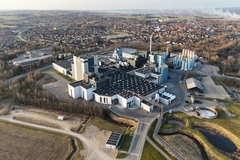
- Industry news
Industry news
- Category news
Category news
- Reports
- Key trends
- Multimedia
Multimedia
- Journal
- Events
- Suppliers
- Home
- Industry news
Industry news
- Category news
Category news
- Reports
- Key trends
- Multimedia
Multimedia
- Events
- Suppliers
New solutions for Operations Monitoring

The mostly higher pH values, low – or no – carbonisation and a better offering of nutrients and growth promoting substances are leading to a substantially broader germ spectrum with, in the main, greater potential for harm.

16/04/07 Current developments in the non-alcoholic beverages market, the packaging variations favoured by the consumer and heightened quality requirements underline the enormous importance of product safety at the present time.
The volumes sales of Aqua plus beverages and Flavoured Water products in Germany, for example, up 77.9% and 95.5% respectively in 2006, exhibited disproportionate growth compared with the market overall. The mostly higher pH values, low – or no – carbonisation and a better offering of nutrients and growth promoting substances are leading to a substantially broader germ spectrum with, in the main, greater potential for harm. Current studies on a variety of Aqua plus beverages have confirmed once again that products with a pH value below 3.5 are far less susceptible than those with pH values above 4. A 44.9% rise in volume sales in the non-returnable PET sector and the simultaneous decline of 12.4% in returnable glass (source: GfK ConsumerScan 2005/2006) reflect the current trend in packaging. However, the related and usually more gentle production methods, such as aseptic filling, often demand more complex manufacturing technology.
The DöhlerGroup carries out an annual assessment of the microbiological condition of beverages. Over 10,000 samples were examined in each of the years 2003 to 2006. Additionally, more than 100 microbiological process checks were performed in filling plants to judge their hygiene status. The results were aggregated in a cause analysis and then evaluated. Döhler is translating the detailed findings derived from the exercise into solution measures on the spot at its customers’ plants.
Continuous microbiological monitoring, from the raw material to the finished product, is thus becoming increasingly important to ensure appropriate product qualities – and also to avoid any related image loss. In the process, quality assurance requires that the entire value-added chain work together:
• raw materials: gentle handling vs initial microbiological contamination
• intermediate products: microbiological contamination vs compound quality (e.g. flavour and colour, sensitive ingredients)
• beverages: end-product safety vs marginal conditions (e.g. packaging, filling method, plant validation)
Safety in aseptic filling lines – with AVM from Döhler
The goal must be to prevent contamination from the outset. This includes guaranteeing and validating aseptic filling lines. The DöhlerGroup has developed a detection medium (AVM = Aseptic Validation Medium) permitting the simple, flexible and reliable identification of beverage contaminants in the aseptic filling process under standard production parameters. Employing simple visual evaluation that requires no additional technical equipment, the fast-acting (results within 5-7 days) and standardised medium generates cost-savings by avoiding subsequent problems. Not only are a small number of samples examined, but a complete filling operation is considered, thus increasing (statistical) certainty several times over. AVM constitutes an important tool for certification in accordance with the new ISO 22000 food safety norm, the HACCP system, and standards such as IFS and BRC.
Risk management in relation to Alicyclobacillus
Aside from prevention and the detection of microbiological trace contamination, sensory quality assurance is, of course, very much in the forefront. Among the germs capable of causing sensory damage are the Alicyclobacilli, whose spores occur mainly in the soil. The spores are able to survive normal pasteurisation conditions, germinate after a period of several weeks and, in favourable conditions (these include warm temperatures and an acidic medium), grow. Their heat resistance rises with an increase in Brix.
Alicyclobacilli can spoil beverages by creating an off-flavour (guaiacol, 2,6-di-bromophenol, 2,6-di-chlorophenol), although as yet only A. acidoterrestris, A. acidiphilus and A. herbarius have demonstrated the potential for forming off-flavour in one case in ten. Other Alicyclobacillus strains, such as A. acidocaldarius or A. pomorum, which are unable to produce off-flavours in drinks, thus possess a far smaller potential for spoiling drinks, if any.
The DöhlerGroup has developed a number of products that permit the safe and reliable detection and assessment of the beverage-harming potential of Alicyclobacilli. Yet merely detecting Alicyclobacilli in the product does not provide a clear indication of the extent or level of risk of beverage deterioration. With the Guaiacol Detection Kit, acid-tolerant and heat-resistant bacteria with significant beverage-harming potential can be detected by applying a simple test. Combining it with BAT agar and BAT broth guarantees perfect risk management and provides a reliable, sensitive and economical method of analysing Alicyclobacilli even in complex products. All products comply with the standard IFU method No. 12, are ready for use and therefore extremely easy to apply.
Further current developments for the fast and specific detection of beverage contaminants are molecular biological differentiation and identification systems for a variety of contaminants, and a PCR-based detection method for heat-resistant moulds.










